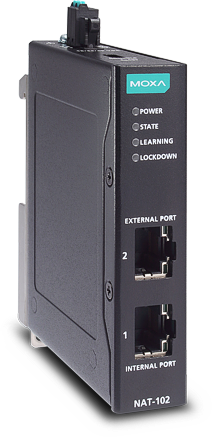
MOXA has introduced an industrial device for Network Address Translation (NAT) named NAT-102, which allows you to simplify the configuration of network devices, remove the problem of lack of public IP addresses and increase the cyber security of the network.
NAT-102 is specially designed to add NAT functionality to the enterprise network, it is easier to set up and maintain, and it also has a lower price compared to a multifunctional managed switch with many redundant functions.
The NAT-102 device supports the following modes of operation: one to one, many to one, port forwarding and NAT loopback. In addition, it provides firewall functions with separation by IP and MAC addresses, as well as ports.
The basic NAT-102 model is capable of operating in industrial environments in the temperature range from -10 to 60°C, and the NAT-102-T modification at extended temperatures from -40 to 75°C.
Why do you need NAT?
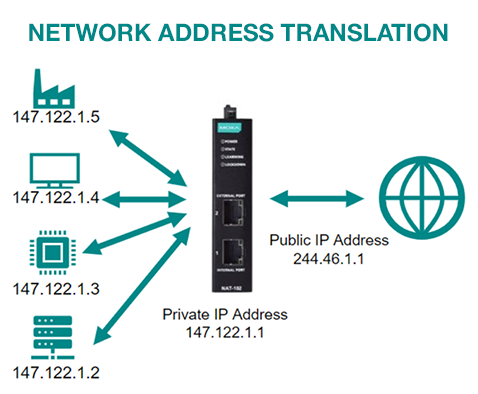
In Ethernet networks, communication between devices occurs by sending and receiving data packets with an IP address for the source and destination of the message. Networks are usually designed using private local IP addresses, which allow devices to communicate locally without access to the Internet. To allow a device with a private IP address to access devices outside the local network, the private address must first be translated to a public public address. Address translation through NAT allows you to replace the local IP address of the source of the message with the public IP address when sending a packet to the external environment and vice versa to replace the destination IP address in the response packet. NAT can also replace the port numbers of the source and destination of the message.
What tasks does NAT solve?
A company may have thousands of devices that need Internet access, but buying a thousand public IP addresses would be impractical, so it is common to use one or more public IP addresses in conjunction with NAT, which allows devices to access the Internet.
One of the benefits of NAT is to increase the privacy and security of a local network, as it hides devices with internal IP addresses from outside networks. This makes it more difficult for attackers to understand which devices are hidden behind NAT, which complicates the search for vulnerabilities and increases the cybersecurity of the network.
In addition, NAT can be used within a local network to facilitate access to internal network segments. For example, a company has installed several identical cabinets that have the same IP addresses of Ethernet devices. You can spend a lot of time reconfiguring each device and then look for errors in the network settings for a long time or hide each cabinet behind NAT, which allows you to save the existing network settings of devices inside the cabinet and at the same time uniquely access the cabinet at a new IP address.
NAT-102 and NAT-102-T features:
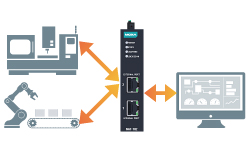
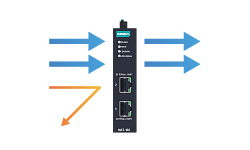
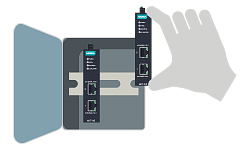

Key characteristics of NAT-102 and NAT-102-T:
| Name | Description |
|---|---|
| Ethernet | 2x 10/100BaseT(X), RJ45 |
| Software features | |
| Management | Web Console (HTTP/HTTPS), LLDP, Telnet, TFTP, HTTPS, SSH |
| Security | Secure Boot, Trust access control |
| Time synchronization | NTP Server/Client, SNTP |
| Routing protocol | Static routing |
| Routing | Up to 15kpps |
| Routing table | Up to 32 routing rules |
| Simultaneous connections | Up to 30k |
| Connections per second | Up to 4.5k |
| Firewall | |
| Filter | IP address, MAC address, ports |
| Port-based Auto Learning Lock | MAC address, IP address |
| Bandwidth | Up to 15kpps |
| NAT | |
| Functions | 1-to-1, N-to-1, Port forwarding, NAT loopback |
| Bandwidth | Up to 15kpps |
| Real-Time Firewall / VPN Event Log | |
| Event type | Policy based |
| Storage | Local storage, Syslog server |
| Other characteristics | |
| Power requirements | 12/24/48 VDC, 2.4 W |
| Dimensions | 20 x 73 x 90 mm |
| Operational temperature |
NAT-102: -10…60°C NAT-102-T: -40…75°C |
| Certificates |
Safety UL 62368-1 EMC EN 55032/35 Explosion proof ATEX, Class I Division 2 NEMA TS2 traffic control Railway EN 50121-4 |

